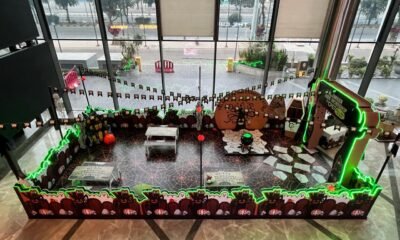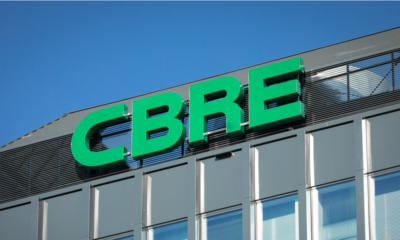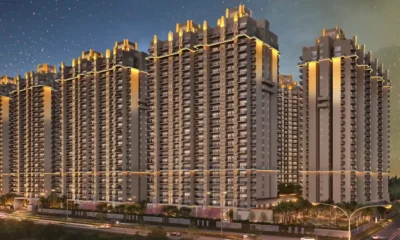News
Key Trends Redefining Retail Space Dynamics: It’s Not Space But Strategy

New Delhi, June 26, 2025: Retail real estate is undergoing a significant shift, and it’s not just about where consumers shop, but also how and why.
Across urban centres, especially Delhi-NCR and emerging tier 2 cities, retail is no longer defined by shopping alone. Experience, digital integration and strategic zoning are emerging as the real game-changers.
Data supports the trend and per a Cushman & Wakefield report, Delhi-NCR’s Q1 leasing figures show that fashion and F&B account for nearly half of all transactions while entertainment captures a significant 18 per cent. Developers are now dedicating up to 40 per cent of total retail space to non-retail experiences—cinemas, gaming zones and event venues included.

Pankaj Jain, Founder and CMD, SPJ Group, says, “Premium and luxury malls are thriving despite the competitive retail landscape. Their near-full occupancy rates aren’t just about the brands—they reflect the value of an ecosystem built around having a good time. Pop-ups, masterclasses and luxury previews keep their audiences returning—and spending. Retail spaces, particularly Grade A malls, are not just about shopping but rather experience has turned them into a special draw.”
According to CBRE’s latest India Retail Report, 65 per cent of urban shoppers now expect brands to offer an integrated online-offline journey. Digital isn’t just a channel anymore—it’s infrastructure. Physical stores now need to function as fulfilment centres, content stages and brand playgrounds.

Arjun Gehlot, Director, Ambience Group, says, “If 2020 was the year e-commerce exploded, 2025 is the year physical stores finally caught up—by embracing omnichannel strategies in earnest. Click-and-collect, AR-powered try-ons and seamless returns are no longer ‘good to have’. They’re core to customer retention. In response, retailers are treating their physical locations less like stores and more like interactive brand hubs.”
Within metros too, hyper-local zoning strategies are driving footfall. By placing complementary tenants’ side-by-side—think boutique gyms beside health cafés or luxury labels next to premium salons—developers are creating fluid shopping ecosystems.

“In 2025, the retail landscape is being redefined by a shift from location-driven success to experience-led engagement. Developers and brands are strategically curating dynamic environments that integrate immersive events, cultural festivals, interactive workshops and live performances to enhance customer interaction and dwell time,” says Nandini Taneja, Regional Director, leasing, Reach Group.
“Complementing this experiential approach is the emergence of new retail formats such as concept stores, phygital showrooms and experience-first outlets that blend storytelling, technology and product discovery. This evolution is positioning retail destinations as multifaceted community spaces, where meaningful engagement drives sustained footfall and long-term value’.”
The retail real estate sector, currently at over $80 billion, is poised to touch the trillion-dollar mark by 2030. Retail real estate developers are no longer selling space. They are building experiences, enabling journeys and engineering interactions. The retail story of 2025 isn’t about how much space you have. It’s about what you do with it.

Ashwani Kumar, Pyramid Infratech, says, “Mixed-use formats are key and emerging differentiators. They are turning into examples of how integrated retail, office and residential spaces can ensure round-the-clock activity—and lower vacancy rates. The real winners will be those who innovate—who think beyond square feet and focus on what those feet are doing.”
While Delhi, Mumbai, and Bengaluru remain key engines of growth, tier 2 cities are quietly reshaping the national retail map. Chandigarh, Jaipur, Lucknow and Coimbatore are seeing sustained rental appreciation, lower entry barriers and fast-growing consumer demand.

 News4 weeks ago
News4 weeks agoHARERA Gurugram Orders Developer to Pay Assured Returns, Bars Arbitrary Fit-out Charges

 News4 weeks ago
News4 weeks agoOffice Leasing at Historic High in First 9 Months of 2025, says CBRE

 News4 weeks ago
News4 weeks agoIndustrial & Logistics Sector Marks 21.7% YoY Growth in Q3 2025: Savills India

 News4 weeks ago
News4 weeks agoThe High Roads: Premium Corridors in NCR Fuel India’s Housing Market Surge

 Guest Column4 weeks ago
Guest Column4 weeks agoNew Gurugram’s Sector 83 is Next Frontier for Luxury Homes, Smart Investments

 News4 weeks ago
News4 weeks agoAshtech Group Plans to Invest ₹1,800 Crore in Greater Noida West Luxury Housing Project

 News4 weeks ago
News4 weeks agoBIBA Unveils First Wedding Edit Store at Omaxe Chowk

 News4 weeks ago
News4 weeks agoLML Industrial Park Receives PADMA Scheme Approval, Offers ₹2 Crore Incentives for MSMEs





























